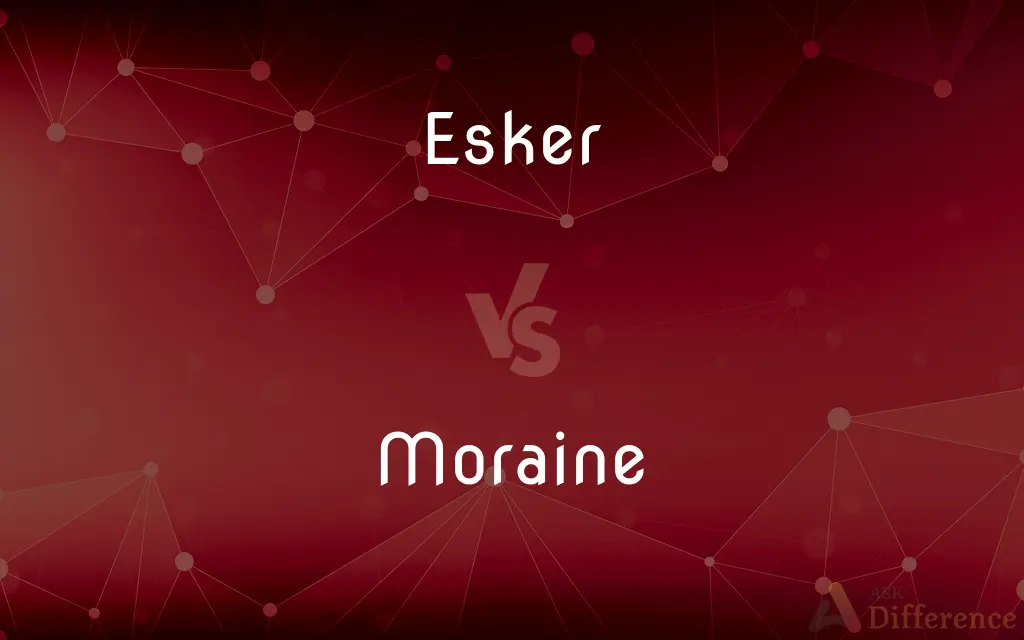Esker vs. Moraine — What's the Difference?

Difference Between Esker and Moraine
ADVERTISEMENT
Compare with Definitions
Esker
An esker, eskar, eschar, or os, sometimes called an asar, osar, or serpent kame, is a long, winding ridge of stratified sand and gravel, examples of which occur in glaciated and formerly glaciated regions of Europe and North America. Eskers are frequently several kilometres long and, because of their uniform shape, look like railway embankments.
Moraine
A moraine is any accumulation of unconsolidated debris (regolith and rock), sometimes referred to as glacial till, that occurs in both currently and formerly glaciated regions, and that has been previously carried along by a glacier or ice sheet. It may consist of partly rounded particles ranging in size from boulders (in which case it is often referred to as boulder clay) down to gravel and sand, in a groundmass of finely-divided clayey material sometimes called glacial flour.
Esker
A long, narrow, steep-sided ridge of coarse sand and gravel deposited by a stream flowing in or under a melting sheet of glacial ice. Also called os3.
Moraine
An accumulation of boulders, stones, or other debris carried and deposited by a glacier.
Esker
A long, narrow, sinuous ridge created by deposits from a stream running beneath a glacier.
ADVERTISEMENT
Moraine
(geology) An accumulation of rocks and debris carried and deposited by a glacier.
Esker
(geology) a long winding ridge of post glacial gravel and other sediment; deposited by meltwater from glaciers or ice sheets
Moraine
An accumulation of earth and stones carried forward and deposited by a glacier.
Moraine
Accumulated earth and stones deposited by a glacier
Share Your Discovery

Previous Comparison
Pseudophakia vs. Aphakia
Next Comparison
Endeavor vs. Undertaking













































